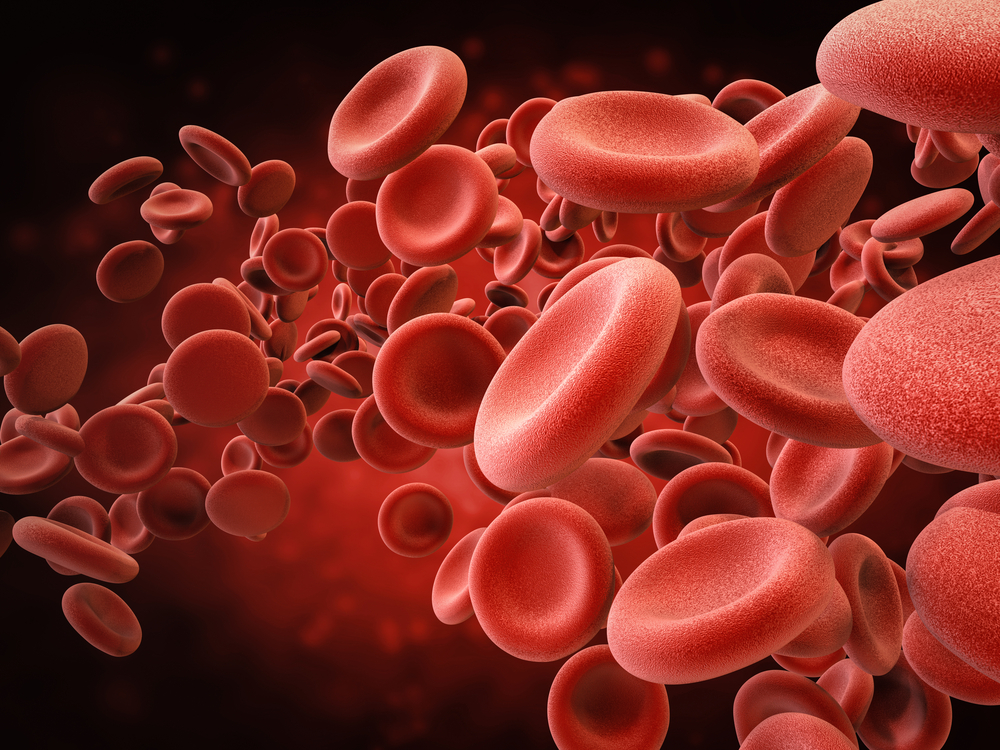Test Using Dried Blood Spot May Be Simple Way to Diagnose HAE
Written by |

A new diagnostic test for hereditary angioedema (HAE) can measure the activity of C1-inhibitor (C1-INH) in a drop of dried blood, and may be easy enough to use at point-of-care medical centers.
The test was described in Clinica Chimica Acta, in the study “A Novel Functional C1 Inhibitor Activity Assay in Dried Blood Spot for Diagnosis of Hereditary Angioedema.”
HAE types 1 and 2 are caused by a lack of functional C1-IHN as a result of mutations in the gene that codes for this protein (SERPING1). Current gold-standard diagnostic tests involve, essentially, testing the activity of C1-INH in a sample of a person’s blood.
But these tests “require immediate processing and appropriate storage of blood samples in a physician’s clinic, and are not standardized, cost-effective, or readily accessible in all geographic regions of the world,” the researchers wrote.
“[S]ubstantial misdiagnosis and delayed diagnosis are still very common,” they added, and estimates are that “diagnosis rates of HAE range from 5–10% in China, Mexico, Japan, Korea compared to 75–80% in US and Western Europe.”
Dried blood spot (DBS) tests have been used for decades in newborn screening for certain metabolic conditions, and there has been growing interest in their use for other congenital conditions, like spinal muscular atrophy.
As its name suggests, DBS testing uses a drop of dry blood. This has numerous advantages, such as needing a relatively small amount of blood (a drop that can be obtained from a finger or heel prick), and because the blood is already dry, storage and transport are less onerous.
The new DBS test measures C1-INH activity. Conceptually, it works similarly to previous diagnostic assays: the sample is mixed with a fixed amount of C1 (the protein C1-INH inhibits), and the level of inhibition is detected, allowing for calculation of the amount of functional C1-INH.
After standardizing their assay using samples with known amounts of functional C1-INH, the researchers — led by a team with Takeda Pharmaceuticals, which markets HAE treatments that include Takhzyro (lanadelumb), Firazyr (incatibant injection), and Cinryze (C1 esterase inhibitor, human) — tested its reliability under various conditions.
They found that measurements taken on the same sample didn’t tend to vary much over time, either during the same day or over the course of several days. Importantly, results were still stable after more than 100 days of storage at room temperature, suggesting that C1-INH “can be shipped and stored at ambient temperatures in DBS without losing activity,” the researchers wrote.
Similarly, samples with different amounts of red blood cells placed on different locations on collection cards were tested, as these can affect the biomechanical properties of DBSs.
Again, measurements were generally consistent across a range of different conditions, suggesting good reliability for this test. But measurements at the extreme ends of red blood cell content (less than 30% or greater than 60%) were somewhat less reliable, suggesting a need for caution in interpreting the results of such samples.
Finally, the assay was tested on blood samples from 24 people diagnosed with HAE (9 males, 15 females) and from 103 people without the condition serving as controls.
Among controls, the levels of functional C1-INH ranged from 311 to 1090 mU/mL (average 573 mU/mL). In 23/24 people with HAE, these levels were below 100 mU/mL; the only outlier had a value of 152 mU/mL.
From these data, the researchers determined the optimal cutoff value to be 303 mU/mL, “which can completely differentiate healthy from HAE subjects,” they wrote.
Overall, these data show the DBS test to be an effective method for HAE diagnosis. And, owing to its logistical advantages compared to current tests, it has the potential to be used at point-of-care medical practices.
“Simple and accessible sample collection techniques and prolonged shipment and storage stability fundamentally expand the availability of HAE diagnostic testing, particularly in regions where there is currently limited or no access to fully equipped clinical laboratories,” the researchers concluded.





